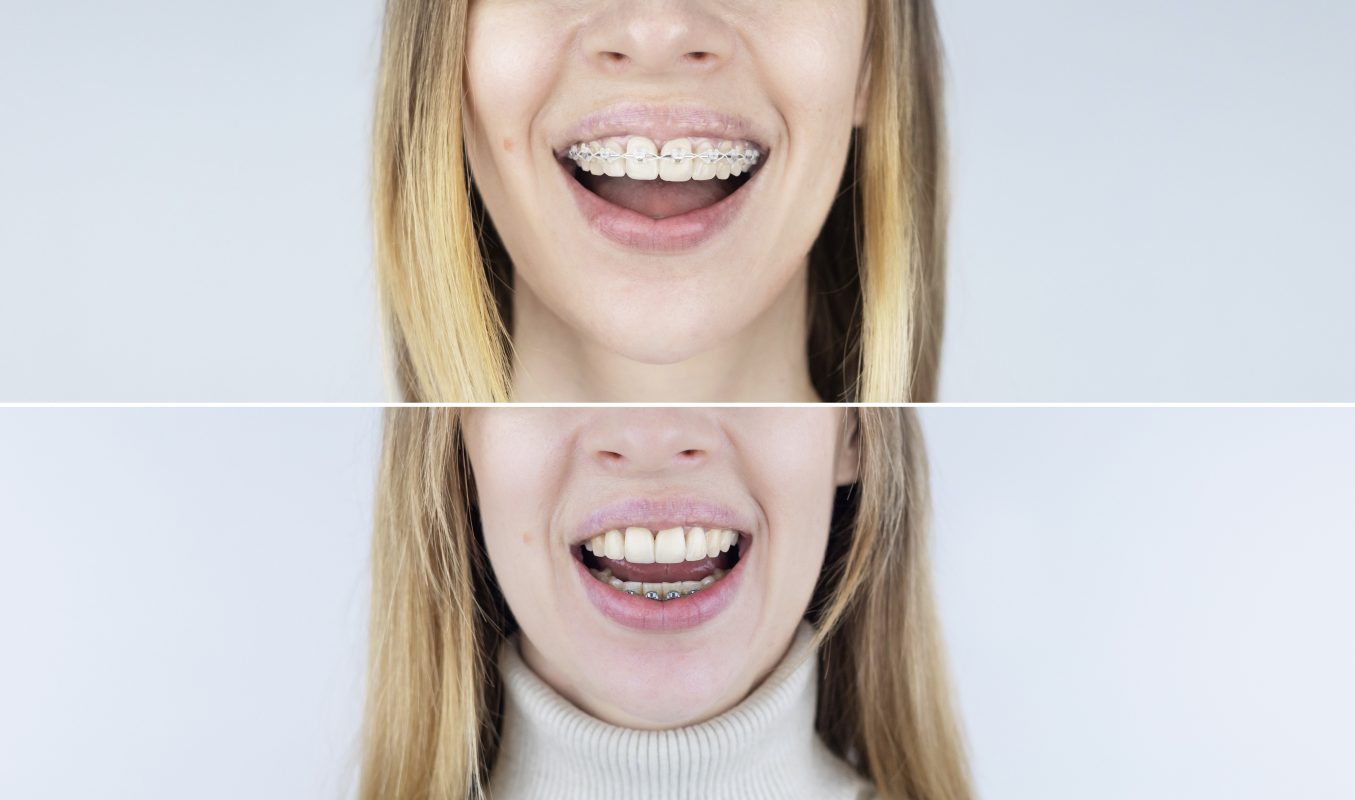If you’re seeking an inconspicuous way to straighten your teeth, you may be wondering whether lingual braces or clear aligners are the better option. As a dentist with 17 years of experience, I can tell you that both choices have their advantages and disadvantages. The optimal choice for you depends on your individual needs and preferences.
How do lingual braces work?
Lingual braces work by being placed on the back of your teeth instead of the front, making them almost invisible from the outside. This is an ideal option for those who want to straighten their teeth in a discreet manner. They are custom-made for each patient, which means they can be more comfortable than traditional braces. We usually use Incognito.
How do clear aligners work?
Clear aligners function by being removable, clear plastic trays that fit over your teeth. They gradually move your teeth into the desired position by applying pressure in a controlled manner. They are nearly invisible, making them an ideal option for those who want to straighten their teeth without anyone knowing. We usually use Spark and Invisalign.
Advantages and Disadvantages of Lingual Braces
Lingual braces have some advantages. They are virtually invisible, making them a great option for people concerned about their appearance. You also do not need to remember to wear them, which is fantastic (they are fixed and discreet). They are also custom-made for each patient, which means that they can be more comfortable than traditional lingual braces. Nonetheless, cleaning lingual braces can be more difficult than cleaning traditional braces, which is a disadvantage (see our article on problems with teeth straightening). Additionally, they may be more expensive than other orthodontic treatments (see our article on the costs of orthodontic treatment).
Advantages and Disadvantages of Clear Aligners
Clear aligners also have their benefits and drawbacks. They are nearly invisible, making them a great choice for those concerned about their appearance. They are also removable, allowing you to take them out when eating, brushing your teeth, or flossing. Nonetheless, clear aligners may be more expensive than traditional braces (see our article on the costs of orthodontic treatment). Additionally, they may not be the best alternative for people with severe malocclusions (see our article on problems with teeth straightening).
Which One is Right for You?
The answer to this question about lingual brace vs clear aligner depends on several factors, including the severity of your teeth alignment problem, your budget, and your personal preferences. Lingual braces may be the best choice if you want a treatment that is virtually invisible and custom-made for you. Clear aligners may be the best option if you want a treatment that is removable and more comfortable. However, please note that if you are unable to wear clear aligners for 22 hours a day every day for 6-12 months, they will not be effective for you. It’s crucial to consult with your dentist to determine which option is best for you.
Lingual braces and clear aligners are both excellent options for straightening your teeth, and they both have advantages and disadvantages. The ideal choice for you is determined by your unique requirements and preferences. If you’re interested in either of these treatments, speak with your dentist to learn more.
I had a patient who was a model and was very self-conscious about her teeth. She wanted to straighten them but didn’t want to wear traditional braces because she thought they would affect her appearance. I recommended lingual braces to her, and she was thrilled with the results. She was able to straighten her teeth without anyone knowing, and it didn’t affect her modelling career at all.

In summary, both lingual braces and clear aligners are excellent options for straightening your teeth. However, each has its own advantages and disadvantages. It is crucial to consult your dentist to determine which option is best for you and enjoy the benefits of a beautiful and healthy smile. If you have any questions for us, please complete the short form and one of our friendly team will contact you within 24 hours.
Get In Touch
Here are six frequently asked questions about lingual braces and clear aligners:
- Are lingual braces painful? While any orthodontic treatment can cause some discomfort, many people find lingual braces to be relatively comfortable. In addition, the brackets and wires are custom-made for each patient, which can help reduce irritation and soreness.
- Can clear aligners fix severe problems? Clear aligners are effective for mild to moderate malocclusions. However, severe problems, such as traditional braces or other orthodontic appliances, may require more extensive treatment.
- How often do I need to visit my dentist while wearing lingual braces or clear aligners? The frequency of your dental visits will depend on your individual treatment plan. In general, you may need to visit your dentist every 4-8 weeks for adjustments with lingual braces, while clear aligners may require more frequent check-ups.
- Can I eat and drink with clear aligners? You should remove your clear aligners when eating and drinking to avoid damaging them or staining them. However, cleaning your teeth thoroughly before putting your aligners back in your mouth is essential.
- Can I play sports while wearing lingual braces or clear aligners? Yes, you can participate in sports or other physical activities while wearing lingual braces or clear aligners. However, wearing a mouthguard is essential to protect your teeth and braces or aligners from damage.
- How much do lingual braces and clear aligners cost? The cost of lingual braces and clear aligners can vary depending on the severity of your malocclusion, your location, and other factors. Therefore, it’s essential to consult with your dentist to determine which treatment is right for you and how much it will cost.


